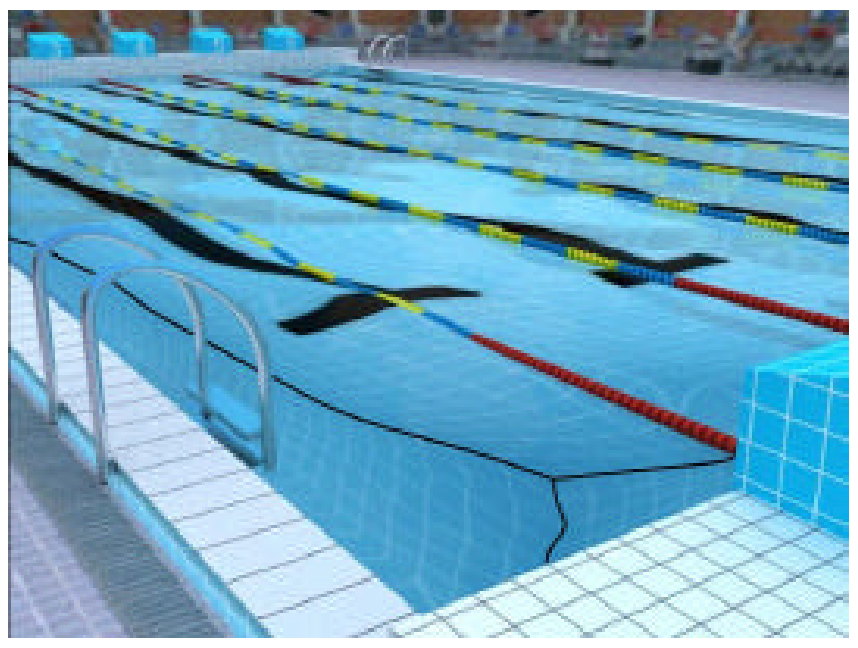Photorealistic ray tracing aids understanding of metamaterials
Metamaterials have nanometer-sized structures that permit very unusual behavior of light. For example, they can exhibit indices of refraction (a measure of a medium's ability to bend light) below unity or even negative, which is not possible with materials found in nature. Possible applications include devices such as invisibility cloaks and perfect optical lenses that enable imaging to below the diffraction limit (e.g., seeing a virus with an optical microscope). Metamaterials are hard to make because of current limitations in fabrication at very small scales. However, there are plenty of potentially useful objects with positive indices that are just as difficult to construct.
One example is the Eaton lens, an omnidirectional retroreflector, shown in Figure 1. This spherical object has a refractive index of one at the outer boundary but approaches infinity at the origin. It has recently been shown that the singularity at the origin—i.e., the part where it goes to infinity—can be removed using transformation optics,1 making construction plausible. Other devices (such as invisibility cloaks) also require unusual indices of refraction, but the metamaterials currently available to make them have many imperfections. We are interested in modeling how closely such objects could be approximated with realistic materials. The subjective experience of seeing a realistic scene is also useful for education, and allows study of the visual impact of materials' properties on device performance.

Examining the propagation of light in metamaterials routinely involves modeling them by methods such as finite-difference time-domain (FDTD) or other wave-based approaches. This is important in the design of perfect lenses, photonic crystals, and antennas (including plasmonic devices). Once FDTD has been used to characterize a material, it is generally possible to determine its effective permittivity (i.e., index of refraction), loss (i.e., scattering of light), and the polarization dependence of the permittivity. Simpler methods can then be used to model the material on a large scale, as we propose. For example, cloaking devices are designed with certain requirements that cannot be met with any existing metamaterials. We are interested in how closely we could approach the ideal situation if we relax the requirements on the refractive index a little. In other words, what would an imperfect cloaking device look like?
Since we aim to study the visual impact of metamaterial properties on device parameters, the simplest modeling technique (and the one we consider) is ray tracing. Photorealistic ray tracing calculates an image of a scene by simulating the way rays of light travel. It can, for example, show how an imperfect invisibility cloak would behave, given a set of material properties. It is widely used in the field of 3D computer graphics and animation, and for special effects in cinema. Refraction and Fresnel reflection (for isotropic, positive-index materials) are correctly handled in most commercially available and open-source ray-tracing software. However, these effects are considered only at interfaces and (usually) only at the interface of a material with air. A variant of the approach, Persistence of Vision Raytracer (POV-Ray), was first reported to render negative-index materials in 2006.2 It is sufficient for dealing with many objects but inadequate for photorealistic modeling of, say, a gradient-index device such as an optical fiber. To integrate this functionality into ray-tracing packages, we precalculate ray trajectories within an object (as, e.g., in Figure 1). This involves repeated numerical integration, which is itself unsuitable for proper rendering. However, either interpolation or advance knowledge of a ray's exit path relative to an entrance path can be used to obtain the desired result.

Ray trajectories in homogeneous materials are straight and most easily demonstrated here. Figure 2 is a constructed image (not a photograph) of a swimming pool filled with ‘water,’ and Figures 3 and 4 show the effect of altered ray trajectories, corresponding to different refractive indices. Figure 3 demonstrates total external reflection, and Figure 4 shows what ‘negative-index’ water would look like. A black line is added to show where the bottom of the edge of the pool appears. The photorealism of the images cannot be doubted, and they have high educational value. More importantly, the ability to integrate objects with unusual properties—such as negative index, point singularities, and graded index—into commercially available software will enable detailed study of the visual impacts of changing material properties. As a next step we intend to publish photorealistic images of more complex objects and data garnered from them.

Computer-artwork contributions by D. S. Hanggoro are acknowledged.
Aaron Danner received a BS in electrical engineering from the University of Missouri-Columbia, and MS and PhD degrees from the University of Illinois at Urbana-Champaign. In 2006 he joined the electrical-engineering faculty at the National University of Singapore. He is a member of the IEEE Lasers and Electro-Optics Society and the Optical Society of America.

